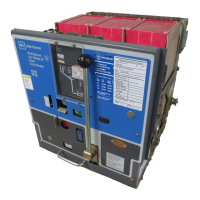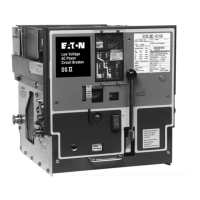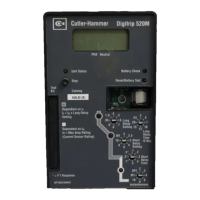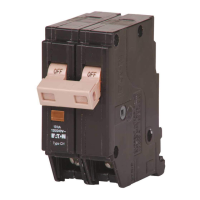1.8. 33-790-11
play and is forced to rotate exactly as much as the lever-
ing device shaft rotates.
Figure 30c shows the standard arrangement, without the
interlock screw, with the levering device arms
in
the
CONNECT position. Note that there is a clearance
between the back
of
the hook and Pin
A.
This permits the
close bar to be pushed to the "close" position and close
the breaker.
In
Figure 30d, all parts are
in
the same position as
in
Fig-
ure 30c, except that the interlock screw has been placed
in
the "narrow slot". This arrangement is shown
in
Figure
25. This forces the interlock plate to rotate about 10
degrees further than
in
Figure 30c, so that there is almost
no clearance between Pin A and the back
of
the hook.
Consequently the Close bar cannot be pushed to the
"Close" position. However, the breaker can be
remote-closed
by
applying control voltage to the spring
release coil through a control switch or other circuit-mak-
ing device.
~---
a) Qose
Bar
(Normal Position)
Page 35
5.1.8.3 Breaker
Equipped
for
Electric
Lockout
Power operated breakers may be equipped for electric
lockout, meaning that closing
an
unenergized circuit is
prevented. This may be the main circuit
or
any other
desired circuit. This is accomplished by making it impos-
sible to release the spring release latch by the spring
release device unless the monitored circuit is energized.
The spring release coil (SR) is wired through the contact
on
the motor cut-off switch that closes as the closing
springs become fully charged. The remainder
of
the cir-
cuit is through a front panel closing pushbutton switch
and to the terminals
of
the circuit being monitored. Thus,
when the monitored circuit is energized properly, the
breaker may be closed through the panel pushbutton
switch, provided
in
addition that the closing springs are
charged.
As an additional safeguard against undesired closing
under this electric lockout condition, all such breakers will
be equipped with the interlock screw as described
in
Sec-
tion 5.1.8.2 above. This prevents hand closing
of
the
breaker
in
the CONNECT position.
b)
Qose
Bar
(Released
Position)
1. Spring Release Latch 5. Spring Release Latch Link Pin
9.
Close-Bar Cam
2.
Bell Crank Pivot Pin 6. Close Bar
3.
Bell
Crank 7. Close Bar Pivot Pin
4. Spring
Release
Latch Link
8.
Open-Close Indicator Pin
10. Spring
Rel-
Davlca
11
• Closing
cam
Stop
Roller
Fig.
31
Close Interlock
to
Prevent Efforts to Close a Breaker that is Already Closed
Effective October 1998
Courtesy of NationalSwitchgear.com

